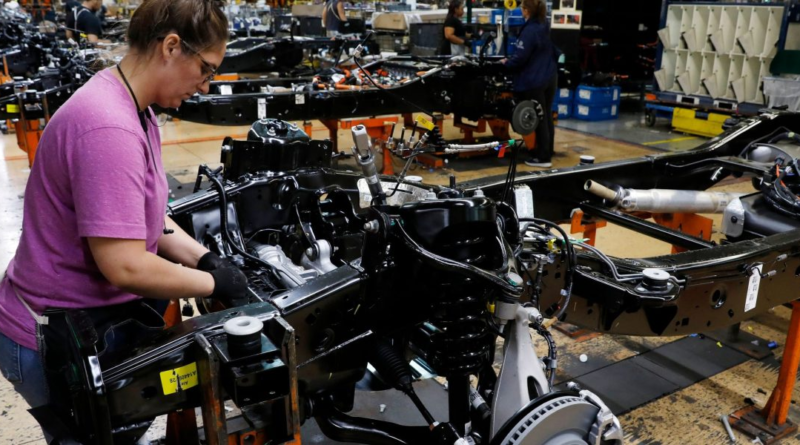American manufacturing just slumped to its lowest level in 3 years. Jefferies says the sector is 'still mired in recession'
There’s been a swath of bullish new predictions from Wall Street strategists and economists since first-quarter U.S. GDP growth was revised up last week, while multiple small business surveys have revealed that the backbone of the American economy remains robust. A “soft landing”—where inflation cools without the need for a job-killing recession—is now not only possible but likely, according to many experts. Even Federal Reserve Chairman Jerome Powell said last week at a European Central Bank Forum in Sintra, Portugal, that a recession is no longer the most likely case for the American economy. This comes after his staff revealed in April that they were expecting a “mild recession” to hit within a year.
Despite the recent optimism, however, the manufacturing sector is showing signs of weakness. The ISM Manufacturing Purchasing Managers’ Index (PMI)—a survey of managers’ new orders, inventory levels, production, supplier deliveries, and employment that is used to gauge the health of the sector—fell to 46 last month from 47.1 in May, its lowest point since May 2020. The reading under 50 signals the eighth straight month of contraction in the manufacturing sector after a 29-month expansion streak.
“Broadly, the data show that the manufacturing sector is still mired in a recession,” Jefferies economist Thomas Simons wrote in a Monday research note.
Only one of six main manufacturing industries, transportation equipment, managed to grow in June. Simons also said that new order demand “remains weak,” pointing to the drop in new export orders index from 50 in May to 47.1 last month. The backlogs index—which measures orders that manufacturers have received but not yet started—also came in weaker than expected in June at 38.7, just above May’s 37.5 reading, which was the lowest since February of 2009.
“With a lack of new demand, businesses have been focused on working through back orders,” Simons said of the data. “The dropoff in demand for goods should lead to further disinflation in the space, but also more widespread job cuts in the manufacturing sector than we have seen to date.”
To his point, the Prices Paid index—which measures average prices paid by manufacturers—also sank to 41.8 in June from 44.2 in May. And the employment index dropped to 48.1 from 51.4, signaling contraction in manufacturing jobs.
Supplier deliveries also fell for the ninth straight month in June. “This was initially viewed as a sign that supply-chain problems were improving, but now it looks more like a sign that demand for capital equipment and manufactured goods is just plain weak,” Simons wrote.
Jeffrey Roach, LPL Financial’s chief economist, told Fortune that the manufacturing sector doesn’t play the same role in the U.S. economy as it used to, but the ISM data remains a “good real-time indicator of corporate sentiment”—and the latest data shows activity in the manufacturing sector has “stalled.”
Still, even Roach argued this isn’t necessarily bad news for the Federal Reserve, which has been attempting to slow the economy with interest rate hikes to quash inflation. “The decline in economic activity will likely ease some of the inflationary pressures, making investors and central bankers less concerned about the risks of sticky inflation,” he said.



